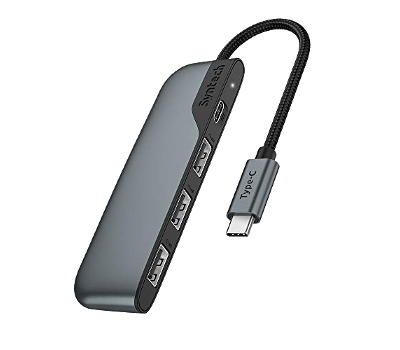

USB 3.1 preserves the existing SuperSpeed transfer rate, giving it the new label USB 3.1 Gen 1, while defining a new SuperSpeed+ transfer mode, called USB 3.1 Gen 2 which can transfer data at up to 10 Gbit/s over the existing USB3-type-A and USB-C connectors (1200 MB/s after encoding overhead, more than twice the rate of USB 3.0).

USB 3.1, released in July 2013, is the successor standard that replaces the USB 3.0 standard. It is recommended that manufacturers distinguish USB 3.0 connectors from their USB 2.0 counterparts by using blue color for the Standard-A receptacles and plugs, and by the initials SS. Among other improvements, USB 3.0 adds the new transfer rate referred to as SuperSpeed USB (SS) that can transfer data at up to 5 Gbit/s (500 MB/s after encoding overhead), which is about 10 times faster than Hi-Speed (maximum for USB 2.0 standard).
#USB TYPE 3 SERIAL#
USB 3.0, released in November 2008, is the third major version of the Universal Serial Bus (USB) standard for interfacing computers and electronic devices. USB 3.0 Promoter Group ( Hewlett-Packard, Intel, Microsoft, NEC, ST-Ericsson, and Texas Instruments) ġ2 mm (A plug), 8 mm (B plug), 12.2 mm (Micro-A & Micro-B plugs)Ĥ.5 mm (A plug), 10.44 mm (B plug), 1.8 mm (Micro-A & Micro-B plugs)
#USB TYPE 3 MAC#
The term has been adopted by the USB Implementers Forum (USB-IF) to describe how USB4's tunneling architecture dynamically manages the connection between USB4 routers so multiple protocols can simultaneously share the fabric's resources.Īpple's new MacBooks and Mac Mini will be the first to use Apple Silicon's own Arm-based processors, so there was some doubt surrounding support for USB4. When illustrated, the crisscross pattern resembles woven cloth. The word fabric is a metaphor used to describe a network of interconnecting nodes, such as switches. USB4 Protocol Tunneling is similar to Alt Mode but doesn't require a DP or PCIe controller. USB4 Protocol Tunneling creates a USB-C tunnel through which DisplayPort or PCIe data can be sent.


Conceptually, Protocol Tunneling creates a "pipe" with one protocol and uses it to send data in another protocol. If both devices can speak and understand the same protocol, a connection can be established. When devices talk to one another, they do so using a protocol. When a device is connected to a USB4 port, USB PD negotiates a "contract" to deliver power, safely supplying up to 100 W (5A/20V). USB4 dynamically allocates bandwidth to video and data based on actual needs.ġ00 Watt Charging: All USB4 devices support USB Power Delivery. Video and Data Bandwidth Optimization: USB 3.2 allocated fixed bandwidth to data or video or, in DP Alt Mode, gave 100% to video. DisplayPort and Thunderbolt 3 are also supported via Alt Mode.īackward compatibility with USB 3.2, USB 2.0 and Thunderbolt 3: USB4 maintains compatibility with previous versions of the USB specification and, thanks to its Thunderbolt 3 foundation, supports TB3 Alt Mode too. Multiple Data and Display Protocols: USB4 supports USB 3.2, PCIe and DisplayPort 1.4a through a technique called protocol tunneling. They can optionally support 40 Gbps (4.8 GB/sec) if they use the shorter 0.8 meter Gen 3 cable. Up to 40Gbps Data Transfer Rate: USB4 devices are required to support 20 Gbps (2.4 GB/sec). The USB4 protocol requires a USB-C to USB-C cable. USB 4 (officially "USB4" without the space) is an important update, not only for the new capabilities it offers but because it helps to resolve the confusion over USB 3.x naming and, for the most part, it gives users a predictable and consistent experience.


 0 kommentar(er)
0 kommentar(er)
